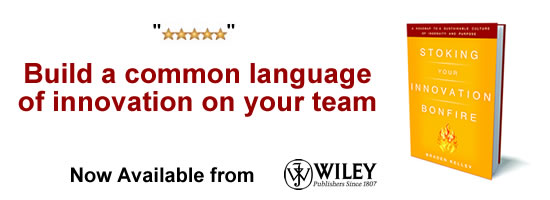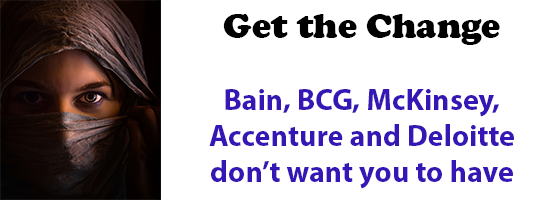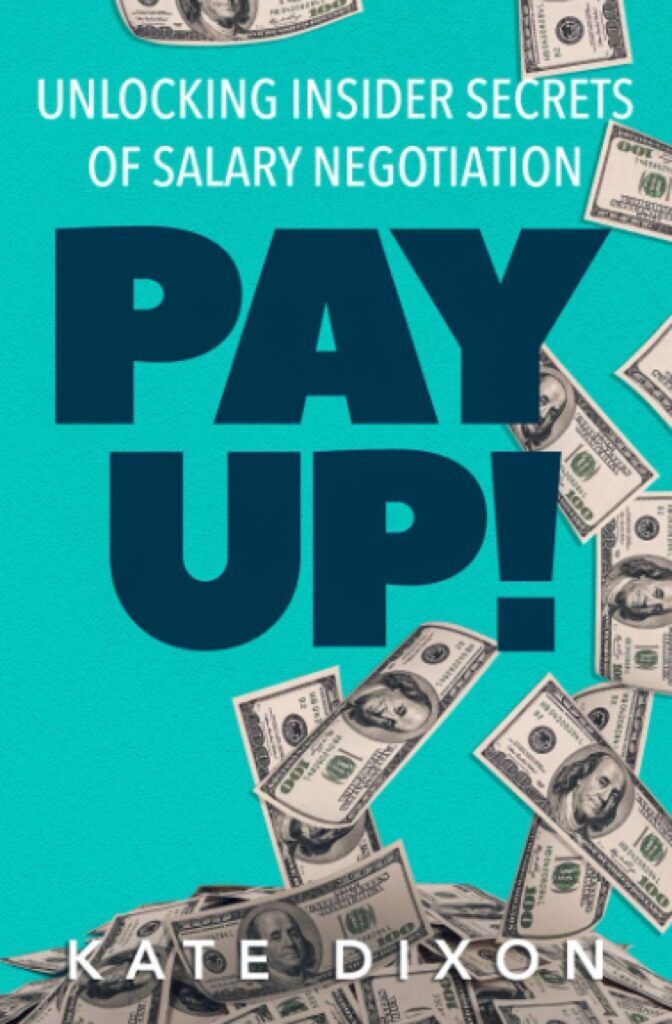
2021 marked the re-birth of my original Blogging Innovation blog as a new blog called Human-Centered Change and Innovation.
Many of you may know that Blogging Innovation grew into the world’s most popular global innovation community before being re-branded as Innovation Excellence and being ultimately sold to DisruptorLeague.com.
Thanks to an outpouring of support I’ve ignited the fuse of this new multiple author blog around the topics of human-centered change, innovation, transformation and design.
I feel blessed that the global innovation and change professional communities have responded with a growing roster of contributing authors and more than 17,000 newsletter subscribers.
To celebrate we’ve pulled together the Top 100 Innovation and Transformation Articles of 2024 from our archive of over 2,500 articles on these topics.
We do some other rankings too.
We just published the Top 40 Innovation Bloggers of 2024 and as the volume of this blog has grown we have brought back our monthly article ranking to complement this annual one.
But enough delay, here are the 100 most popular innovation and transformation posts of 2024.
Did your favorite make the cut?
1. Organizational Debt Syndrome Poses a Threat – by Stefan Lindegaard
2. FREE Innovation Maturity Assessment – by Braden Kelley
3. The Education Business Model Canvas – by Arlen Meyers, M.D.
4. The Role of Stakeholder Analysis in Change Management – by Art Inteligencia
5. Act Like an Owner – Revisited! – by Shep Hyken
6. Iterate Your Thinking – by Dennis Stauffer
7. SpaceX is a Masterclass in Innovation Simplification – by Pete Foley
8. What is Human-Centered Change? – by Braden Kelley
9. A 90% Project Failure Rate Means You’re Doing it Wrong – by Mike Shipulski
10. Should a Bad Grade in Organic Chemistry be a Doctor Killer? – by Arlen Meyers, M.D.
11. How Netflix Built a Culture of Innovation – by Art Inteligencia
12. Fear is a Leading Indicator of Personal Growth – by Mike Shipulski
13. Sustaining Imagination is Hard – by Braden Kelley
14. No Regret Decisions: The First Steps of Leading through Hyper-Change – by Phil Buckley
15. The Art of Adaptability: How to Respond to Changing Market Conditions – by Art Inteligencia
16. Sprint Toward the Innovation Action – by Mike Shipulski
17. Marriott’s Approach to Customer Service – by Shep Hyken
18. Top 5 Future Studies Programs – by Art Inteligencia
19. Reversible versus Irreversible Decisions – by Farnham Street
20. 50 Cognitive Biases Reference – Free Download – Courtesy of TitleMax
21. Free Human-Centered Change Tools – by Braden Kelley
22. Designing an Innovation Lab: A Step-by-Step Guide – by Art Inteligencia
23. Why More Women Are Needed in Innovation – by Greg Satell
24. How to Defeat Corporate Antibodies – by Stefan Lindegaard
25. The Nine Innovation Roles – by Braden Kelley
26. Top 40 Innovation Bloggers of 2023 – Curated by Braden Kelley
27. Human-Centered Change – by Braden Kelley
28. Visual Project Charter™ – 35″ x 56″ (Poster Size) and JPG for Online Whiteboarding – by Braden Kelley
29. FutureHacking – Be Your Own Futurist – by Braden Kelley
30. ACMP Standard for Change Management® Visualization – 35″ x 56″ (Poster Size) – Association of Change Management Professionals – by Braden Kelley

31. Overcoming Resistance to Change – by Chateau G Pato
32. Are We Abandoning Science? – by Greg Satell
33. How Networks Power Transformation – by Greg Satell
34. What Differentiates High Performing Teams – by David Burkus
35. The 6 Building Blocks of Great Teams – by David Burkus
36. Unintended Consequences. The Hidden Risk of Fast-Paced Innovation – by Pete Foley
37. The Role of Employee Training and Development in Enhancing Customer Experience – by Art Inteligencia
38. The Pyramid of Results, Motivation and Ability – by Braden Kelley
39. Your Strategy Must Reach Beyond Markets to Ecosystems – by Greg Satell
40. What is the difference between signals and trends? – by Art Inteligencia
41. Next Generation Leadership Traits and Characteristics – by Stefan Lindegaard
42. Latest Interview with the What’s Next? Podcast – Featuring Braden Kelley
43. A Tipping Point for Organizational Culture – by Janet Sernack
44. Accountability and Empowerment in Team Dynamics – by Stefan Lindegaard
45. Design Thinking for Non-Designers – by Chateau G Pato
46. The Innovation Enthusiasm Gap – by Howard Tiersky
47. The One Movie All Electric Car Designers Should Watch – by Braden Kelley
48. The Ultimate Guide to the Phase-Gate Process – by Dainora Jociute
49. Innovation Management ISO 56000 Series Explained – by Diana Porumboiu
50. How to Create an Effective Innovation Hub – by Chateau G Pato

51. Imagination versus Knowledge – Is imagination really more important? – by Janet Sernack
52. Stoking Your Innovation Bonfire – by Braden Kelley
53. A Shortcut to Making Strategic Trade-Offs – by Geoffrey A. Moore
54. How to Make Navigating Ambiguity a Super Power – by Robyn Bolton
55. Three HOW MIGHT WE Alternatives That Actually Spark Creative Ideas – by Robyn Bolton
56. Problems vs. Solutions vs. Complaints – by Mike Shipulski
57. Innovation or Not – Liquid Trees – by Art Inteligencia
58. Everyone Clear Now on What ChatGPT is Doing? – by Geoffrey A. Moore
59. Leadership Best Quacktices from Oregon’s Dan Lanning – by Braden Kelley
60. Will Innovation Management Leverage AI in the Future? – by Jesse Nieminen
61. The Power of Position Innovation – by John Bessant
62. Creating Organizational Agility – by Howard Tiersky
63. A Case Study on High Performance Teams – by Stefan Lindegaard
64. Secrets to Overcoming Resistance to Change – by David Burkus
65. How to Write a Failure Resume – by Arlen Meyers, M.D.
66. 9 of 10 Companies Requiring Employees to Return to the Office in 2024 – by Shep Hyken
67. The Five Keys to Successful Change – by Braden Kelley
68. What is Social Analysis? – by Art Inteligencia
69. Dare to Think Differently – by Janet Sernack
70. Parallels Between the 1920’s and Today Are Frightening – by Greg Satell
71. What is Trend Spotting? – by Art Inteligencia
72. Driving Change is Not Enough – You Also Have To Survive Victory – by Greg Satell
73. 5 Simple Steps to Team Alignment – by David Burkus
74. Building a Better Change Communication Plan – by Braden Kelley
75. The Role of Leadership in Fostering a Culture of Innovation – by Art Inteligencia
76. 4 Simple Steps to Becoming Your Own Futurist – An Introduction to the FutureHacking™ methodology – by Braden Kelley
77. Four Hidden Secrets of Innovation – by Greg Satell
78. Why Organizations Struggle with Innovation – by Howard Tiersky
79. An Introduction to Strategic Foresight – by Stefan Lindegaard
80. Learning About Innovation – From a Skateboard? – by John Bessant

81. 800+ FREE Quote Posters – by Braden Kelley
82. Do you have a fixed or growth mindset? – by Stefan Lindegaard
83. Generation AI Replacing Generation Z – by Braden Kelley
84. The End of the Digital Revolution – by Greg Satell
85. Is AI Saving Corporate Innovation or Killing It? – by Robyn Bolton
86. The Experiment Canvas™ – 35″ x 56″ (Poster Size) – by Braden Kelley
87. America Drops Out of the Ten Most Innovative Countries – by Braden Kelley
88. 5 Essential Customer Experience Tools to Master – by Braden Kelley
89. AI as an Innovation Tool – How to Work with a Deeply Flawed Genius! – by Pete Foley
90. Four Ways To Empower Change In Your Organization – by Greg Satell
91. Agile Innovation Management – by Diana Porumboiu
92. Do Nothing More Often – by Robyn Bolton
93. Five Things Most Managers Don’t Know About Innovation – by Greg Satell
94. The Fail Fast Fallacy – by Rachel Audige
95. Top Six Trends for Innovation Management in 2025 – by Jesse Nieminen
96. How to Re-engineer the Incubation Zone – by Geoffrey A. Moore
97. Flaws in the Crawl Walk Run Methodology – by Braden Kelley
98. Master the Customer Hierarchy of Needs – by Shep Hyken
99. Rise of the Atomic Consultant – Or the Making of a Superhero – by Braden Kelley
100. A Shared Language for Radical Change – by Greg Satell
Curious which article just missed the cut? Well, here it is just for fun:
101. Is Disruption About to Claim a New Victim? – by Robyn Bolton
These are the Top 100 innovation and transformation articles of 2024 based on the number of page views. If your favorite Human-Centered Change & Innovation article didn’t make the cut, then send a tweet to @innovate and maybe we’ll consider doing a People’s Choice List for 2024.
If you’re not familiar with Human-Centered Change & Innovation, we publish 1-6 new articles every week focused on human-centered change, innovation, transformation and design insights from our roster of contributing authors and ad hoc submissions from community members. Get the articles right in your Facebook feed or on Twitter or LinkedIn too!
Editor’s Note: Human-Centered Change & Innovation is open to contributions from any and all the innovation & transformation professionals out there (practitioners, professors, researchers, consultants, authors, etc.) who have a valuable insight to share with everyone for the greater good. If you’d like to contribute, contact us.
 Sign up here to get Human-Centered Change & Innovation Weekly delivered to your inbox every week.
Sign up here to get Human-Centered Change & Innovation Weekly delivered to your inbox every week.






![]() Sign up here to join 17,000+ leaders getting Human-Centered Change & Innovation Weekly delivered to their inbox every week.
Sign up here to join 17,000+ leaders getting Human-Centered Change & Innovation Weekly delivered to their inbox every week.














 After a week of torrid voting and much passionate support, along with a lot of gut-wrenching consideration and jostling during the judging round, I am proud to announce your Top 40 Innovation Bloggers of 2024:
After a week of torrid voting and much passionate support, along with a lot of gut-wrenching consideration and jostling during the judging round, I am proud to announce your Top 40 Innovation Bloggers of 2024: Greg Satell is a popular speaker and consultant. His first book,
Greg Satell is a popular speaker and consultant. His first book, 
 Mike Shipulski brings together people, culture, and tools to change engineering behavior. He writes daily on Twitter as
Mike Shipulski brings together people, culture, and tools to change engineering behavior. He writes daily on Twitter as 
 A twenty-five year Procter & Gamble veteran, Pete has spent the last 8+ years applying insights from psychology and behavioral science to innovation, product design, and brand communication. He spent 17 years as a serial innovator, creating novel products, perfume delivery systems, cleaning technologies, devices and many other consumer-centric innovations, resulting in well over 100 granted or published patents. Find him at pete.mindmatters@gmail.com
A twenty-five year Procter & Gamble veteran, Pete has spent the last 8+ years applying insights from psychology and behavioral science to innovation, product design, and brand communication. He spent 17 years as a serial innovator, creating novel products, perfume delivery systems, cleaning technologies, devices and many other consumer-centric innovations, resulting in well over 100 granted or published patents. Find him at pete.mindmatters@gmail.com






 Dainora (a.k.a. Dee) creates customer-centric content at Viima. Viima is the most widely used and highest rated innovation management software in the world. Passionate about environmental issues, Dee writes about sustainable innovation hoping to save the world – one article at the time.
Dainora (a.k.a. Dee) creates customer-centric content at Viima. Viima is the most widely used and highest rated innovation management software in the world. Passionate about environmental issues, Dee writes about sustainable innovation hoping to save the world – one article at the time.
 Soren Kaplan is the bestselling and award-winning author of Leapfrogging and The Invisible Advantage, an affiliated professor at USC’s Center for Effective Organizations, a former corporate executive, and a co-founder of
Soren Kaplan is the bestselling and award-winning author of Leapfrogging and The Invisible Advantage, an affiliated professor at USC’s Center for Effective Organizations, a former corporate executive, and a co-founder of  Diana heads marketing at
Diana heads marketing at 
 Jesse Nieminen is the Co-founder and Chairman at
Jesse Nieminen is the Co-founder and Chairman at 

 Arlen Meyers, MD, MBA is an emeritus professor at the University of Colorado School of Medicine, an instructor at the University of Colorado-Denver Business School and cofounding President and CEO of the Society of Physician Entrepreneurs at
Arlen Meyers, MD, MBA is an emeritus professor at the University of Colorado School of Medicine, an instructor at the University of Colorado-Denver Business School and cofounding President and CEO of the Society of Physician Entrepreneurs at 
 Leo is the founder of
Leo is the founder of  Rachel Audige is an Innovation Architect who helps organisations embed inventive thinking as well as a certified Systematic Inventive Thinking Facilitator, based in Melbourne.
Rachel Audige is an Innovation Architect who helps organisations embed inventive thinking as well as a certified Systematic Inventive Thinking Facilitator, based in Melbourne. Art Inteligencia is the lead futurist at Inteligencia Ltd. He is passionate about content creation and thinks about it as more science than art. Art travels the world at the speed of light, over mountains and under oceans. His favorite numbers are one and zero.
Art Inteligencia is the lead futurist at Inteligencia Ltd. He is passionate about content creation and thinks about it as more science than art. Art travels the world at the speed of light, over mountains and under oceans. His favorite numbers are one and zero.
 Phil McKinney is the Author of “Beyond The Obvious”, Host of the Killer Innovations Podcast and Syndicated Radio Show, a Keynote Speaker, President & CEO CableLabs and an Innovation Mentor and Coach.
Phil McKinney is the Author of “Beyond The Obvious”, Host of the Killer Innovations Podcast and Syndicated Radio Show, a Keynote Speaker, President & CEO CableLabs and an Innovation Mentor and Coach. Dr. Ralph-Christian Ohr has extensive experience in product/innovation management for international technology-based companies. His particular interest is targeted at the intersection of organizational and human innovation capabilities. You can follow him on Twitter
Dr. Ralph-Christian Ohr has extensive experience in product/innovation management for international technology-based companies. His particular interest is targeted at the intersection of organizational and human innovation capabilities. You can follow him on Twitter 
 Dr. Dean Anderson and Dr. Linda Ackerman Anderson lead
Dr. Dean Anderson and Dr. Linda Ackerman Anderson lead 

 Scott Anthony is a strategic advisor, writer and speaker on topics of growth and innovation. He has been based in Singapore since 2010, and currently serves at the Managing Director of Innosight’s Asia-Pacific operations.
Scott Anthony is a strategic advisor, writer and speaker on topics of growth and innovation. He has been based in Singapore since 2010, and currently serves at the Managing Director of Innosight’s Asia-Pacific operations. Paul Hobcraft runs
Paul Hobcraft runs 
 Chateau G Pato is a senior futurist at Inteligencia Ltd. She is passionate about content creation and thinks about it as more science than art. Chateau travels the world at the speed of light, over mountains and under oceans. Her favorite numbers are one and zero.
Chateau G Pato is a senior futurist at Inteligencia Ltd. She is passionate about content creation and thinks about it as more science than art. Chateau travels the world at the speed of light, over mountains and under oceans. Her favorite numbers are one and zero.
 As an experience architect, Alain helps leaders craft customer, employee and shareholder experiences for profit, reinvention and transformation. He does this through his personal consultancy Alain Thys & Co as well as the transformative venture studio
As an experience architect, Alain helps leaders craft customer, employee and shareholder experiences for profit, reinvention and transformation. He does this through his personal consultancy Alain Thys & Co as well as the transformative venture studio 







